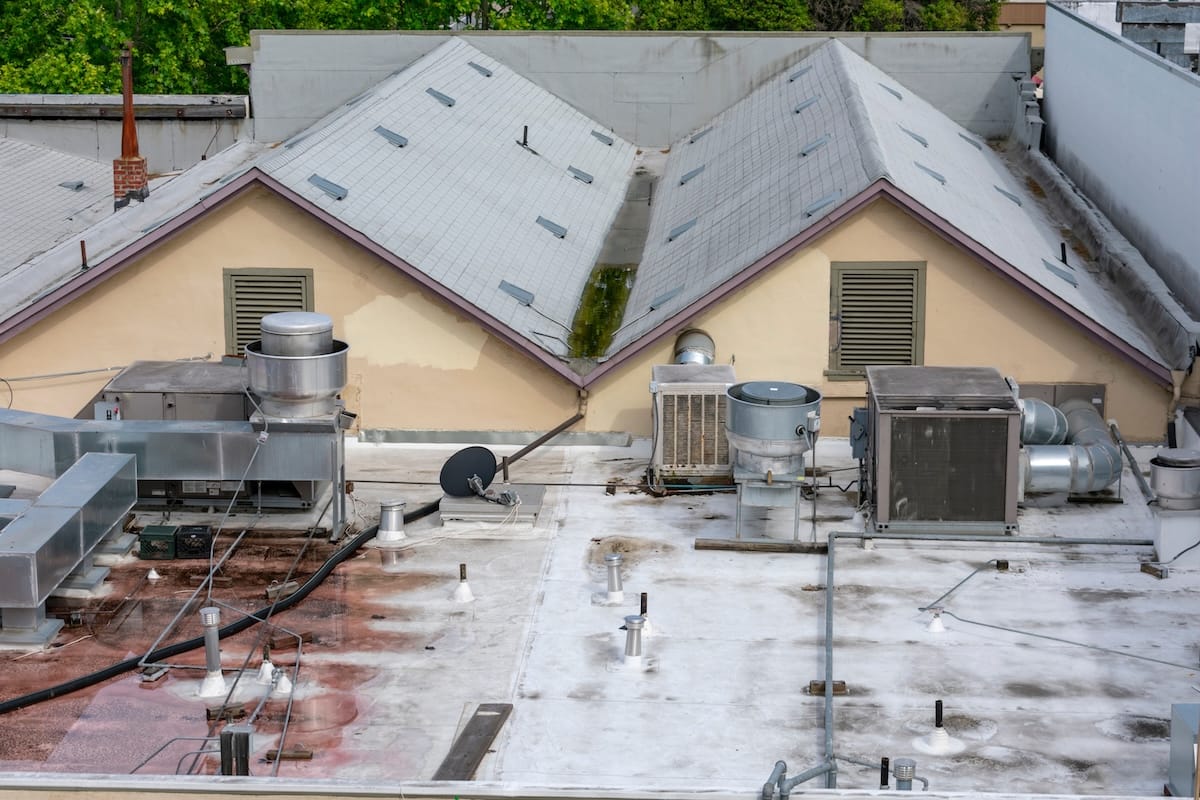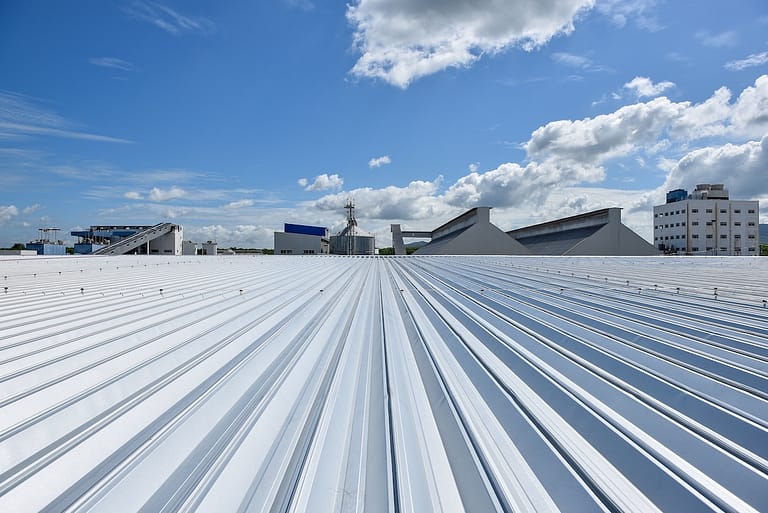A roof leak repair cost can vary significantly, depending on many factors such as the size and extent of the damage, the type of roofing material, and the labor required to fix it. For business owners and property managers, a leaking roof isn’t just an inconvenience, but a potential risk to your operations, safety, and finances. Understanding what contributes to the pricing and solutions for roof leaks can help you make informed decisions and minimize long-term costs.
Here’s what you’ll gain from this guide to managing roof repair for your business needs:
- Insight into factors affecting roof leak repair cost, including material and extent of damage.
- A detailed comparison of common roofing materials and their impact on repairs.
- Actionable steps to prevent roof issues from becoming a costly emergency.
Maintaining your commercial roofing system is not just about damage control; it’s about protecting your investment. Let’s break down what you should expect and how to prepare for the cost of repairs.
📋 Factors That Impact Roof Repair Cost
Several variables contribute to determining roof leak repair costs. Understanding these factors helps you to evaluate quotes and repair plans more effectively.
Type of Roofing Material
The type of roofing material used on your building plays a significant role in repair costs. Some materials are more affordable to patch, while others require specialized expertise. Below are common commercial roofing materials and considerations for each:
- Flat Roofs: Typical for commercial buildings, flat roofs use materials like TPO, EPDM, or PVC. Repairs on these roofs often involve sealing leaks or replacing sections of membrane.
- Metal Roofs: Durable but prone to issues like rust or faulty seams, metal roof repairs often involve resealing or replacing damaged panels.
- Shingle Roofs: Found on smaller commercial properties, shingle roofs are affordable but require frequent upkeep due to wear and tear.
- Modified Bitumen: Cost-effective for flat roofs but may crack over time, requiring patching or re-coating.
Extent of the Damage
The size and scope of the leak will significantly influence the cost. Minor leaks might involve patching or sealing, while extensive issues could require structural repairs or even replacing entire sections of the roof. Larger buildings, naturally, will cost more to repair due to the amount of material and labor involved.
Accessibility to the Roof
The height of your building and ease of accessing the roof can affect costs. Roofs that are difficult to reach may require special equipment like lifts or scaffolding, thus increasing the labor costs.
Labor Costs
Repairing roof leaks isn’t just about material expenses; you’ll also pay for professional labor. Rates can vary based on region and the complexity of the repair, but hiring skilled roofers ensures long-term durability and reduces the risk of recurrent repairs.
🛠️ Common Repair Scenarios for Roof Leaks
Roof leaks can arise from several causes, ranging from poor maintenance to extreme weather conditions. Below are the most common scenarios that often lead to repair needs.
Weather Damage
Storms, high winds, and hail are top causes of leaks in commercial roofing. These conditions can loosen flashing, puncture membranes, or displace roofing materials. Without repair, these vulnerabilities can turn into more extensive structural problems.
Aging Roofs
Even the most durable materials have an expiration date. Older roofs often develop cracks, shifted materials, or degraded waterproofing, which can lead to leaks. Knowing the lifespan of your roofing material helps you budget for maintenance and anticipated repairs.
Improper Installation
A poorly installed roof may develop issues within just a few years. Common problems include failing seams, poor drainage, or gaps around vents and HVAC systems. While this type of leak is especially frustrating, quality repairs can correct these issues before they grow worse.
Ponding Water
Flat commercial roofs can be susceptible to ponding water due to improper drainage systems. Over time, standing water can wear down the roof surface and cause leaks. Proper drainage fixes can mitigate these issues long term.
✅ Steps to Estimate Roof Leak Repair Costs
1. Assess the Damage
Before calling a professional, conduct a quick inspection to take note of the following:
- Where the leaks are appearing inside.
- Any visible damage to roofing materials or seams.
- Pools of water or blocked drainage systems.
Photographing the damage can help when discussing potential repairs with contractors.
2. Get a Professional Roof Inspection
Professional roofers bring years of expertise, ensuring that no detail is overlooked. A thorough roof inspection not only identifies the location of leaks but also uncovers underlying vulnerabilities, like deteriorated insulation or previous improper repairs.
3. Request Multiple Quotes
Getting quotes from at least three reputable roofing companies helps you understand the cost range in your area. Be sure to look beyond numbers; ask for estimates that detail materials, labor, and timelines.
4. Ask About Material Choices
Discuss with the contractor whether repair means replacement with the same material or if an upgrade might be more cost-effective. For instance, switching to a modern PVC membrane on a flat roof could save future maintenance costs.
5. Plan for Add-Ons
When budgeting, keep in mind unforeseen expenses like moisture barriers, replacing damaged insulation, or disposal fees for old materials.
6. Review Warranties
Always confirm whether repairs will be covered under your roof’s current warranty or, if not, whether the repair service provides a new warranty for their work.
👍 The Benefits of Timely Roof Repairs
Addressing roof leaks promptly isn’t just smart maintenance; it’s also a protective strategy that pays off in many ways.
- Reduced Long-Term Costs: Investing in swift repairs reduces the likelihood of expensive damage to your building’s structure, insulation, or interior spaces.
- Ensured Safety and Comfort: Leaks compromise a building’s safety by increasing the risk of mold, mildew, and slip hazards. Regular maintenance ensures a safe and healthy environment for employees or tenants.
- Preserved Energy Efficiency: Leaks often mean compromised roofing insulation, leading to higher energy bills. Timely repairs improve energy efficiency and maintain interior climate control.
- Enhanced Property Value: Well-maintained roofs are attractive to potential buyers or tenants. Regular care signals to stakeholders that the property has been responsibly managed.
Why Choose G. Cannon for Your Roof Repair Needs?
When it comes to repairing commercial roofing, G. Cannon is your trusted partner. Here’s why business owners and property managers consistently choose us for their roofing needs:
Don’t wait for small leaks to turn into significant problems. Protect your investment, maintain your property, and keep your business running smoothly with our trusted roof repair services.
Contact G. Cannon Roofing today for a free estimate! Together, we’ll ensure your building remains safe, dry, and secure for years to come.








